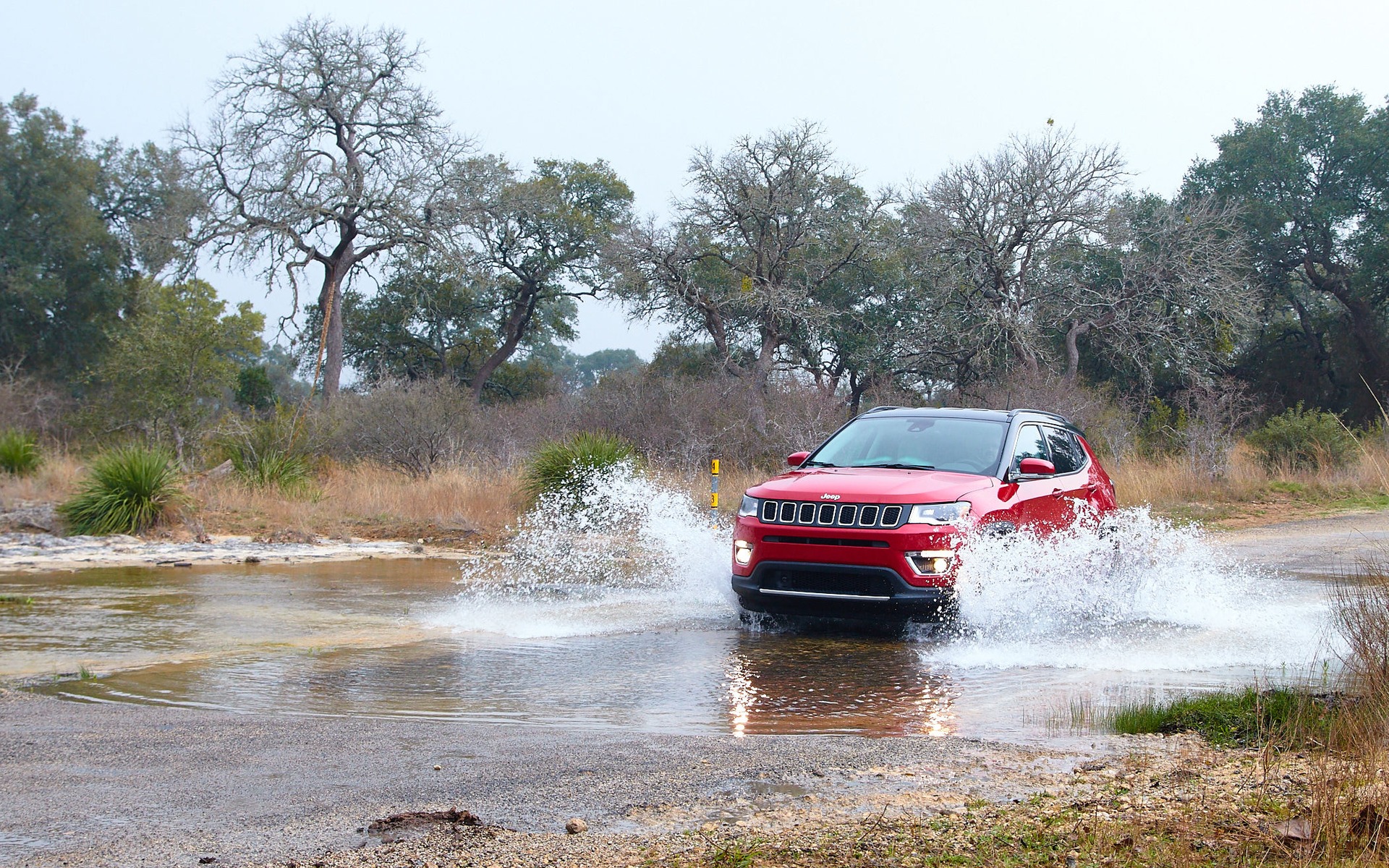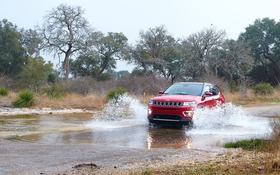2017 Jeep Compass: Finally, a Good Entry-Level SUV

| Strong points |
|
|---|---|
| Weak points |
|
No offense to the many Canadians who were perfectly happy with the Jeep Compass and Jeep Patriot, but they weren’t very good vehicles. They were outdated quickly after they appeared on the market, and they represented the Chrysler of 2008 that went bankrupt and has since fallen into Italian hands.
The only reason that the Compass and the Patriot continued to sell was that they were inexpensive. A special shout-out goes to the Dodge Journey, which is in the same boat.
But the Compass and the Patriot are now history, replaced by the 2017 Compass, a vehicle launched planet-wide. It becomes the Jeep brand’s compact SUV, falling between the Renegade (considered a subcompact) and the Cherokee (midsize according to Jeep).
Some believe that putting the Cherokee in the midsize SUV category with the Honda Pilot and Toyota Highlander is a bit much, but that’s another story entirely. What matters here is that Chrysler finally has a good compact SUV.
An offering that is simpler than ever
For starters, regardless of the version you select, you’ll have Fiat’s 2.4-litre MultiAir four-cylinder, an engine that generates 180 horsepower and 175 lb.-ft. of torque, placing it in a favourable position in the category.
The product range is simple and the versions break down as follows: Sport, North, Trailhawk and Limited. The Sport ($24,900) and North ($28,395) are available with front-wheel drive or 4x4 for an extra $2,500. As with other Jeep products, the Trailhawk 4x4 ($32,895) is designed for off-roading, with a higher suspension, reinforced tires and unique styling touches. At the top of the food chain, the fully loaded Limited 4x4 sells for $34,895.
The basic, front-drive Sport version is also equipped with a six-speed manual gearbox, but only an expected 3% of Compasses will be bought that way. The front-drive North has a six-speed automatic gearbox. If your Compass has a 4x4 system, as will most, the gearbox will be the ZF-designed nine-speed automatic that is notorious for its unreliability. If you really have your heart set on it, however, you can equip the Sport 4x4 and North 4x4 with a manual gearbox.

Nice look, inviting cabin
From a visual standpoint, Jeep’s designers wanted to create a vehicle that captured the spirit of the Grand Cherokee, but that had its own identity. Mission accomplished: all versions of the Compass are easy on the eyes.
The same can be said for the passenger compartment. Whether you opt for the basic Sport version or shell out for leather seats, you’ll get a nice finish and an inspiring design.
The rear bench is neither adjustable nor terribly comfortable, but is redeemed by ample legroom. Thanks to the comfortable front seats with good lateral support, you won’t think twice before embarking on long trips.
This vehicle comes with the Uconnect system, which does a fantastic job. You access applications and menus using icons clearly placed at the bottom of the screen. What’s more, I have never seen Apple CarPlay so impeccably integrated.

A vastly improved ride, an engine begging to be replaced
To say that Jeep updated the Compass’ ride would be an understatement. On the road, the new chassis does wonders, offering rigidity and good handling. The suspension is also efficient—not too hard, not too soft—and the steering, although some find it a tad light, is perfectly suited for everyday driving.
The Compass excels off road thanks to various driving modes that can be selected depending on the type of terrain ahead, but Auto mode will do the trick most of the time. In that mode, the rear wheels can be disconnected from the engine to save fuel and reconnect when needed. Of course, you can keep it in 4x4 mode using the 4x4 lock button. An automatic stop/start feature is also included, but it’s kind of annoying so you’ll probably deactivate it.
While the Compass has good qualities, its engine is inferior to the rest of the product. The four-cylinder offers 180 horsepower on paper, but in reality, it feels more like 100. Acceleration is slow, making passing on the highway dangerous. Then again, if you take it easy when driving, it is undoubtedly the best version of the ZF nine-speed gearbox. In the Compass, it’s smooth and shifts gears discretely, but when you need some power, it seems lost.
It’s hard to say if the gearbox is responsible for the engine’s shortcomings, but everything seems to point to the 2.4-litre MultiAir simply being out of place in an era when we have engines like the 1.5-litre four-cylinder turbo that’s found in new Honda CR-V. Furthermore, while Jeep is touting fuel economy as low as 7.3 L/100 km highway, we were unable to get it below 10 L/100 km during the test drive. The eco-friendliness of the nine-speed gearbox needs to be revisited, but at least the Compass can tow up to 2000 pounds, making it one of the leaders in the category, along with the Ford Escape.
Drivetrain notwithstanding, the Compass is an SUV that is adventurous, well finished and worthy of the competition. With a better engine, our recommendation would be a given. In its current incarnation, however, it’s best suited for those looking for a small, relatively original SUV with good off-road capabilities. Jeep realizes that the majority of buyers will never go off road, but knowing that you could if you wanted to makes all the difference in the world.











